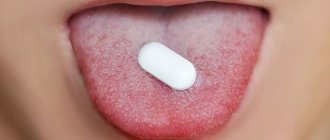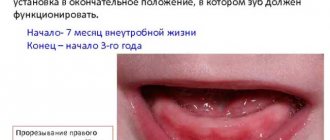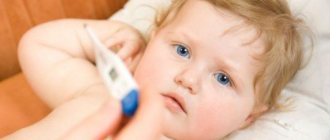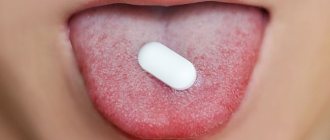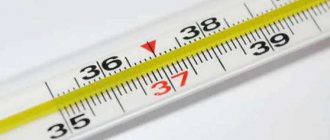Teething is an important event in the life of every child, because he will finally be able to taste solid food. However, the appearance of baby teeth is not always associated with joy and the arrival of the Tooth Fairy. Many children can become irritable and apathetic during the teething period. For some, vomiting, diarrhea, or fever occur when teeth appear.
Whether vomiting is actually caused by teething is controversial. There are no studies confirming the relationship between these natural processes. Most experts agree that teething may cause local pain, but not discomfort in other parts of the body such as rashes or diarrhea.
Other teething symptoms
Some children experience teething without any pain or discomfort. Others may exhibit specific symptoms:
- increased desire to chew;
- salivation;
- cry;
- irritability;
- inability to sleep;
- loss of appetite
- red, tender and swollen gums.
Parents’ concern for the baby’s condition is understandable, because they want to know exactly why the baby’s mood suddenly deteriorated or he began to be capricious.
According to the American Academy of Pediatrics, none of the following symptoms predict the onset of teething:
- cough;
- disturbed sleep;
- decreased appetite;
- vomit;
- diarrhea;
- rash;
- heat.
Vomiting or regurgitation?
In infants, vomiting should be distinguished from regurgitation. With regurgitation, as with vomiting, the contents of the stomach return to the mouth. However, this happens once, immediately after eating. The reason is overfeeding or swallowed air. The air exits back through the esophagus; a slight tension of the abdominal muscles is enough for this. This fundamentally distinguishes regurgitation from vomiting spasms, in which both the abdominal muscles and the diaphragm are involved. When vomiting, the child behaves restlessly, turns red from overexertion, and after an attack he feels weakened.
Why does a baby vomit when teething?
Teething is often wrongly blamed for many symptoms. However, research shows that cough, congestion, vomiting, diarrhea, rashes, fever (over 38°C) and sleep-wake problems are not symptoms of teething. In addition, scientists have found that no single set of symptoms can accurately signal the onset of teething.
The American Academy of Pediatrics explains that from the age of 6 months, a child's immune system weakens, losing maternal antibodies, which increases the risk of exposure to a wide range of diseases, including viruses and bacteria. This is why vomiting may have another cause, but not teething.
The order of changing baby teeth in children by age
After the age of 3 years, parents can take a little break from the changes. And then, at about 5 years of age, the baby teeth are replaced by permanent teeth. The process begins with the lower incisors. Then, after about a year, chewing “sixes” are cut, which parents may mistakenly mistake for milk ones. After another year, the upper incisors are replaced.
To go through this journey with your child without problems and pain, visit the dentist regularly. Children may experience pain simply from jaw expansion. Your doctor can easily tell you the cause of the discomfort. The age of 6–7 years shows the prospect of bite formation. Here you can quickly correct problems that arise so that by adolescence your child has a smooth, beautiful smile.
Next, the procedure for replacing baby teeth continues with the upper lateral incisors by the age of 8 years. At the age of 9–10 years, the molar first premolars appear, followed by the second premolars a year later. 12–13 years is the age when canines appear, and at 14 years the last second molars are cut.
The procedure for replacing baby teeth ends with the complete formation of a bite of 24 teeth.
How to relieve teething discomfort?
To relieve gum discomfort, you can try massaging or rubbing them with your fingers, or giving your baby a chilled teething ring. If your baby is already chewing, you can offer him raw fruits and vegetables.
Do not give your child painkillers or gum rubs, such as viscous lidocaine or benzocaine. These medications may be harmful if swallowed. The US Food and Drug Administration opposes the use of these drugs due to the risk of overdose.
Overdose symptoms include:
- nervousness;
- confusion;
- vomiting;
- convulsions.
Tips for parents
Let's figure out how to avoid possible dangers associated with regurgitation. The main thing that responsible parents need to know is that most often children burp while lying down. This position is dangerous due to aspiration (inhalation) of gastric contents.
Preventing aspiration is simple - just bring the baby upright or turn him on his side or stomach immediately after he burps. Then the baby will be able to push food out of his mouth.
It is worth remembering that it is unacceptable to leave a child with regurgitation syndrome without adult supervision, especially when lying on his back.
When to see a doctor
Teething can usually be managed at home. However, if a child has a high fever and symptoms not related to teeth, this is a reason to consult a doctor.
Some symptoms, such as vomiting, should not be attributed to teething because they may have a more serious underlying cause. Your doctor may want to run some tests to rule out other health problems.
On the Vikids platform you can:
Teeth are cutting!
A seven-month-old child has a fever, his nose is running, he refuses to eat... Is it really ARVI again? After all, you just recently got sick? Or maybe the child isn’t sick after all? But then where do these symptoms, typical of colds, come from?
You can read about the symptoms of ARVI in children here
Today, with Valeria Aleksandrovna Golovko, a pediatrician at Clinic Expert Tula LLC, we are talking about long-awaited teeth. How many months does the first tooth appear? What accompanies their appearance? Our article is about this and much more.
- The first thing parents expect from a child is a smile, then his “aha”, but the most exciting expectation is whether the baby will have teeth? When do babies' first teeth start to grow?
According to statistics, the first milk teeth appear on average at 6-8 months of age. As a rule, these are the middle lower incisors.
The onset of teething depends on a number of factors. From which ones exactly?
— heredity or, in other words, the timing of the appearance of teeth in the baby’s parents;
- full-term baby. Premature babies may develop teeth later;
- the child’s nutrition, namely, sufficient intake of calcium into the body (after the start of complementary feeding, the main sources of calcium are cottage cheese and somewhat less - kefir);
— sufficient intake of vitamin D into the body. Its natural sources are egg yolk and butter;
— climatic conditions. Children living in hot climates erupt teeth earlier;
- gender of the child. Girls erupt teeth earlier;
- sometimes a deviation in the period of teeth appearance from the statistical average in one direction or another occurs in situations where a baby has 1-2 teeth immediately after birth. They are usually always defective and quickly fall out or are removed.
- What is the pattern of baby teeth eruption in children?
First, the lower middle incisors appear (simultaneously or in turn). Then 4 upper incisors erupt, and then 2 lower lateral ones. On average, a baby has 8 teeth by the age of one year.
After this, the molars (premolar teeth) are cut. The lower anteriors appear somewhat earlier (at 12-18 months), and the upper anteriors appear later (at 13-19 months).
Then the rear molars appear: the lower ones - from 20 to 31 months, and the upper ones - from 16 to 22 months.
Canines: lower - from 16 to 23 months, and upper - from 16 to 22 months.
Those. By the age of 3, a child has 20 primary teeth, i.e. incisors, canines and molars.
Individual differences should also be kept in mind, i.e. this number of teeth can be at 2 or 2.5 years.
- Let's talk about the first signs of teeth appearing in a baby. What could they be?
One of the first manifestations is redness and swelling of the gums. Salivation increases. Appetite worsens, up to complete refusal to eat. Irritability increases and sleep is disturbed. The baby asks to be held more often, and physical activity increases. The reason is itching and sore gums.
- What painful symptoms can accompany the appearance of teeth in a child?
This is salivation, nasal congestion and discharge from it. Sometimes there is a cough/cough, stool disturbances in the form of loosening (but maintaining the normal frequency of bowel movements). There may be irritation of the skin of the mouth, chin, chest, i.e. areas where saliva enters. In some cases, the temperature rises: more often not higher than 38.5°C, less often - 39°C and higher, often subsides on the second or third day. The child may become irritable.
Vomiting and diarrhea are less common: in this case, you need to be especially vigilant, since these signs may not be associated with teeth, but indicate some kind of disease - for example, rotavirus infection.
What to do if your child has a stomach ache? The story is told by the surgeon, Deputy Chief Physician for Pediatrics at Clinic Expert Smolensk LLC Alexey Alexandrovich Zakharov
- How to relieve baby's teething pain?
This task is not easy. First of all, it is necessary to ensure that the baby has the opportunity to chew sufficiently. This is what teethers are designed for. Massaging your gums may help.
Gels are also used when teething in children, but their disadvantage is that they can cause an allergic reaction.
There are homeopathic rectal suppositories. According to indications, antipyretic and analgesic syrups can be used.
-Which teethers are best to use?
They must be elastic and durable (and therefore safe). The best ones are silicone, latex, having the appropriate anatomical shape to form the correct bite.
There are also plastic teethers that contain liquid or gel inside. Before use, they are cooled in the refrigerator (at +6°C) and only then given to the child. The additional cold factor also reduces pain to a certain extent. The downside is that these teethers need to be constantly cooled.
A separate advantage of teethers is their positive effect on fine motor skills.
-Can I use carrots, apples or cookies instead of teethers?
In principle, it is possible, but, firstly, these products should already be in the child’s diet; secondly, their use should not begin when the first teeth erupt: at least, all incisors should be present; and thirdly, the child must be able to swallow food well. If you give a teething child an apple, carrot or cookie, you must ensure that the child does not choke.
- How do you feel about using traditional methods to help a child who is teething?
Overall positive, however, only after consulting a doctor. Why? Sometimes, for example, when teething, herbal decoctions are used, but at the same time, one should remember the possibility of allergic reactions.
Is your child suffering from allergies? Ulyana Vladimirovna Chemova, an allergist-immunologist at Clinic Expert Smolensk, tells how to help a baby.
In particular, a decoction of chamomile flowers and a ready-made high-quality aqueous solution of propolis are used.
- Are the first teeth and their appearance a reason to contact a pediatrician or should you go to see him only if something worries you?
Sometimes, under the “mask” of teething, the onset of an infectious disease can be hidden. Therefore, if two or more of the signs that I mentioned earlier are detected, you need to contact your pediatrician.
You can make an appointment with a pediatrician in your city here
- Does teething always affect the general condition of the baby? Or can teeth appear easily and without parents even noticing?
No, the general condition does not always change. In some cases, parents find out about an erupted tooth by catching it with a spoon when feeding the child.
- What is the most important thing when teething? How can parents and their children survive this period calmly?
A universal remedy - double parental affection, attention and care for the baby. Don’t be afraid to pamper your child, carry him in your arms more - this will add calmness to the baby and create a sense of security.
It should be remembered that this period is not very long and, like everything, it too will pass and will later be remembered with a smile.
- The anxiety is over, the first teeth have appeared. How to properly care for them?
As soon as the first tooth appears, you can visit the dentist and begin oral care. There are special silicone brush attachments (put on your finger) that can be used to treat the teeth of even a 6-month-old child. This should be done at least once a day until the age of one year. From the age of one, you can brush your teeth with a very soft toothbrush, moving from the gums to the cutting edge of the tooth or chewing surface.
You might be interested in:
What will help with a cough: badger fat or mustard in socks? We treat children correctly
Your immune system is under control! We create a strong rear for the child
Are unvaccinated children the healthiest?
For reference:
Golovko Valeria Alexandrovna
Graduate of the Faculty of Medicine of Tula State University in 2004.
In 2005, she completed an internship in the specialty “Pediatrics”
Currently working as a pediatrician at Clinic Expert Tula LLC.
Belching - the mechanism of the process
Belching in a baby activates the process of digesting food.
Belching is a physiological process in which excess air is expelled from the stomach through the oral cavity. This requires a reflex contraction of the gastric muscles and an open cardiac sphincter. A person becomes familiar with this phenomenon in infancy.
During feeding, the baby swallows some air. It needs to be removed from their little tummy. But a small amount of air is necessary for the normal functioning of the gastrointestinal tract. This helps regulate internal pressure in the body. Additional functions of burping:
- Improving gastric motility
- Activates the process of food digestion
- Reduced pressure in the stomach
- A safe mechanism that prevents stretching of the walls of the stomach and intestines
During normal functioning of the gastrointestinal tract, the process of removing air goes unnoticed. But in pathological processes, additional symptoms are added to belching. In this case, additional examination and treatment of the underlying disease is required.
Probable Causes
Food intoxication can lead to pathological belching.
Doctors identify several probable causes for the development of pathological belching. All diseases require the attention of a doctor and careful treatment. Belching as a sign of disease:
- Hydrocephalus is the accumulation of fluid in the structures of the brain. It can be congenital or acquired. The first is a consequence of some viral diseases suffered by the mother while waiting for the toddler. The second is a consequence of a difficult birth, head injury, meningitis at an early age.
- Perinatal encephalopathy is a pathological process in the brain of a toddler that develops in 1 month of life. There can be a lot of reasons. These include maternal illnesses, unfavorable working conditions, stress, infections, childbirth before the age of 18, Rhesus conflict, and pathological childbirth. Each case is individual.
- Achalasia is a disorder of motor activity of the esophagus. Although this disorder belongs to gastrointestinal diseases, it is, in fact, a neurological disorder. The reasons for the development of this pathology are unknown.
- Pyloric stenosis is a congenital pathology of the pylorus of the stomach. Boys get sick more often than girls. Acquired forms are extremely rare as a result of a previous stomach ulcer. Doctors identify the following possible causes of the disease: the effect of certain medications, exposure to toxic reagents in early pregnancy, and endocrinological disorders. The result may be intestinal obstruction.
- Food intoxication.
- Infectious diseases.
- In rare cases of kidney disease.
All these pathological conditions require the attention of a doctor. Self-treatment in this case is not only inappropriate, but also dangerous. In difficult cases, surgery will be required. But only after consultation with a gastroenterologist, surgeon and based on the results of a thorough study.
Parents! Don't panic! Surgical actions for pyloric stenosis and achalasia are carried out according to methods proven over the years. Usually it is allowed to start feeding a toddler already on the 1st day after the intervention. In order to reduce the risk of developing pathologies, the expectant mother should undergo all the necessary tests and behave according to the recommendations of the gynecologist. If additional symptoms appear, do not self-medicate. Show your little one to the doctor! It's better to be safe than to bite your elbows later!


